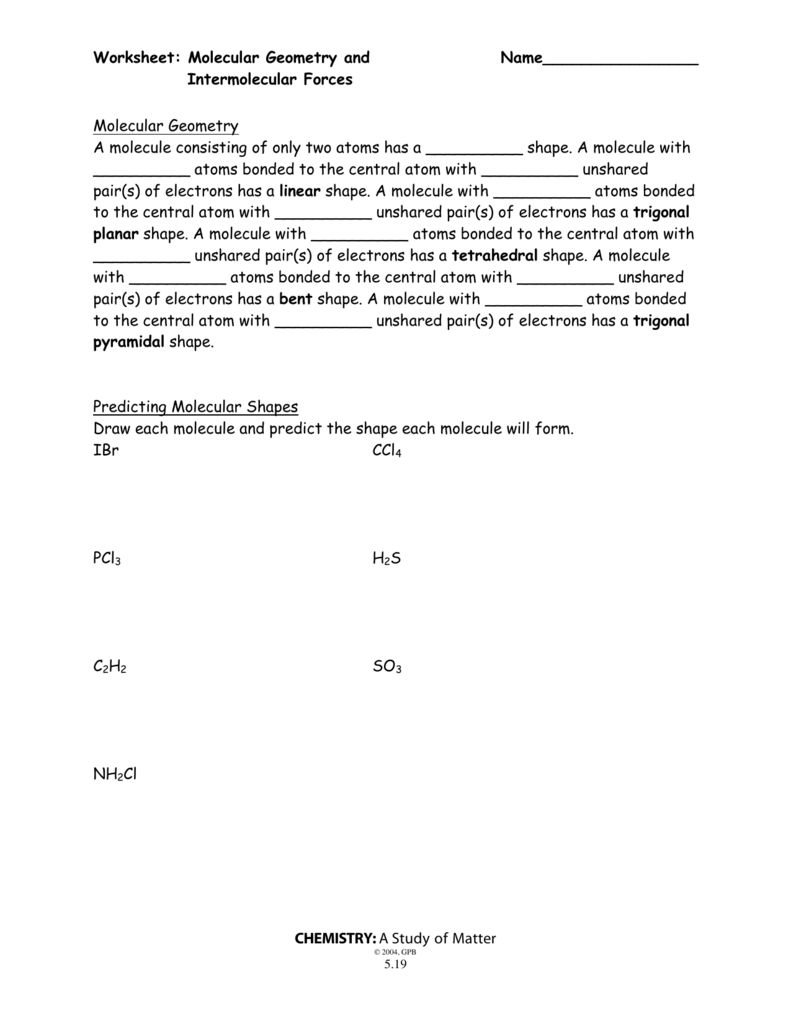Intro To Intermolecular Forces Pogil Answers : 8 best POGIL images on Pinterest | Ap chemistry, Human ... : Intermolecular forces are the forces.
Intro To Intermolecular Forces Pogil Answers : 8 best POGIL images on Pinterest | Ap chemistry, Human ... : Intermolecular forces are the forces.. Thirty six asked us to determine the kind of in a molecular forces that are present in each element or compound. Questions left blank are not counted against you. Is difluormethane polar or non polar? Transcribed image text from this question. Intermolecular forces determine bulk properties such as the melting points of solids and the boiling points of liquids.
Intramolecular forces (bonding forces) exist within molecules and influence the chemical properties. H2s i2 n2 h2o 6. Do not type units into the answer boxes, type only the numeric values. They give many substances their properties, such as melting and boiling nevertheless, differences in the forces between atoms and molecules can lead to profound differences even between compounds that would seem similar. Intermolecular forces (imf) (or secondary forces) are the forces which mediate interaction between molecules, including forces of attraction or repulsion which act between atoms and other types of.
Intermolecular forces are not as strong as intramolecular forces, but they influence a lot of properties in a chemical.
Hydrogen bonding van der waals are the weakest van der waal forces exist between all molecules in the universe. Thirty six asked us to determine the kind of in a molecular forces that are present in each element or compound. Page 1 of 7 name date block pogil: A lot of books describe them as being fairly weak. So everything has intermolecular forces. They are a weak electrostatic force and they are caused by the movement of charge. Baxley intermolecular forces worksheet answers are on page 3 & 4. Intermolecular forces, which are weaker but hold separate molecules together. Intramolecular forces occur within/inside molecules, while intermolecular forces occur between molecules. The focus of this lesson: Intermolecular forces determine bulk properties such as the melting points of solids and the boiling points of liquids. Do not type units into the answer boxes, type only the numeric values. Intramolecular forces are the forces within a molecule or between atoms or different parts of a molecule.intermolecular forces are the forces between two molecules.it is normally said that intramolecular forces are stronger because they involve chemical bonding and that is certainly correct.
Well there's different types of intermolecular forces. In fact, groups of molecules stick. Forces which exist within same molecule or a polyatomic ion ,affect the chemical properties of the substance. Which of these is not an intermolecular force? H2s i2 n2 h2o 6.

Different types of intermolecular forces (forces between molecules).
Ø only polar species are involved in intermolecular attractive forces should be drawn between two ends of opposite charge. Well there's different types of intermolecular forces. Intramolecular forces occur within/inside molecules, while intermolecular forces occur between molecules. Worksheet 12a (intro) intermolecular forces predict the type of solids (ionic, molecular, or atomic) the following substances would form: As you have learned, matter is made up of discrete particles called atoms, which chemically combine to form molecules. Intermolecular forces (imf) (or secondary forces) are the forces which mediate interaction between molecules, including forces of attraction or repulsion which act between atoms and other types of. They are also responsible for the formation of the condensed phases, solids and liquids. Intermolecular forces are the forces. Thirty six asked us to determine the kind of in a molecular forces that are present in each element or compound. Different types of intermolecular forces (forces between molecules). Is difluormethane polar or non polar? A lot of books describe them as being fairly weak. Without intermolecular forces holding molecules together we would not exist.
Intermolecular forces (imf) are the forces which cause real gases to deviate from ideal gas behavior. That is the force responsible for holding water molecules together, and. Greater the intermolecular forces, higher is the boiling point. They give many substances their properties, such as melting and boiling nevertheless, differences in the forces between atoms and molecules can lead to profound differences even between compounds that would seem similar. The focus of this lesson:

Intramolecular forces are the forces within a molecule or between atoms or different parts of a molecule.intermolecular forces are the forces between two molecules.it is normally said that intramolecular forces are stronger because they involve chemical bonding and that is certainly correct.
Do not use commas or scientific notation when entering large numbers. 1 name date block pogil: 1.what specific molecule is represented inside. There are three types of intermolecular forces; Rank the following from weakest intermolecular forces to strongest. Page 1 of 7 name date block pogil: Thank you for submitting your answer. What are these intermolecular forces? These forces are weak compared to the intramolecular forces, such as the covalent or ionic bonds between atoms in a molecule. The intermolecular forces arises due to following interactions: Intramolecular forces occur within/inside molecules, while intermolecular forces occur between molecules. As you have learned, matter is made up of discrete particles called atoms, which chemically combine to form molecules. Dipoles are stronger than london forces alone, so polar molecules tend to have stronger intermolecular forces than nonpolar molecules of a similar size and polarity.
Komentar
Posting Komentar